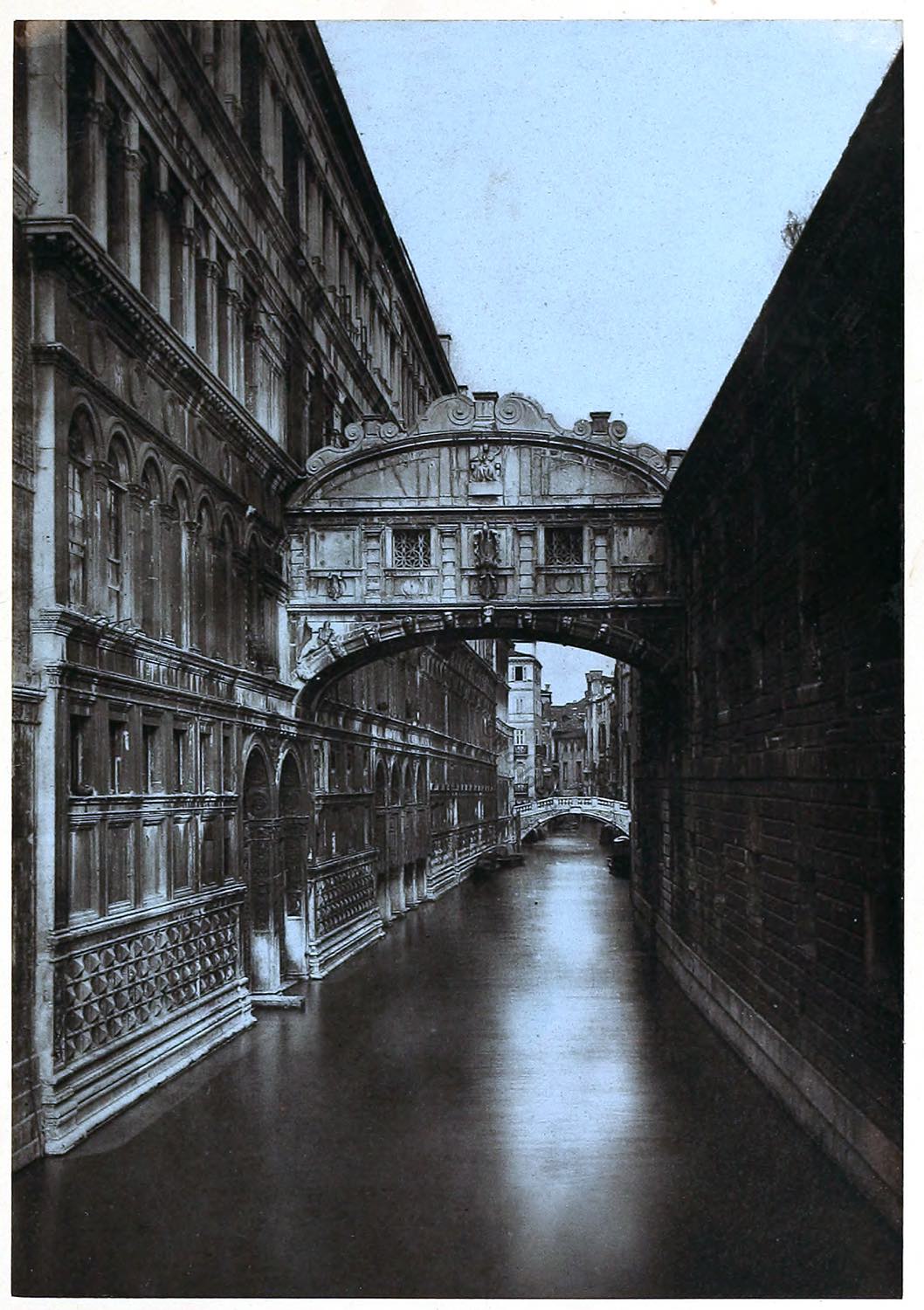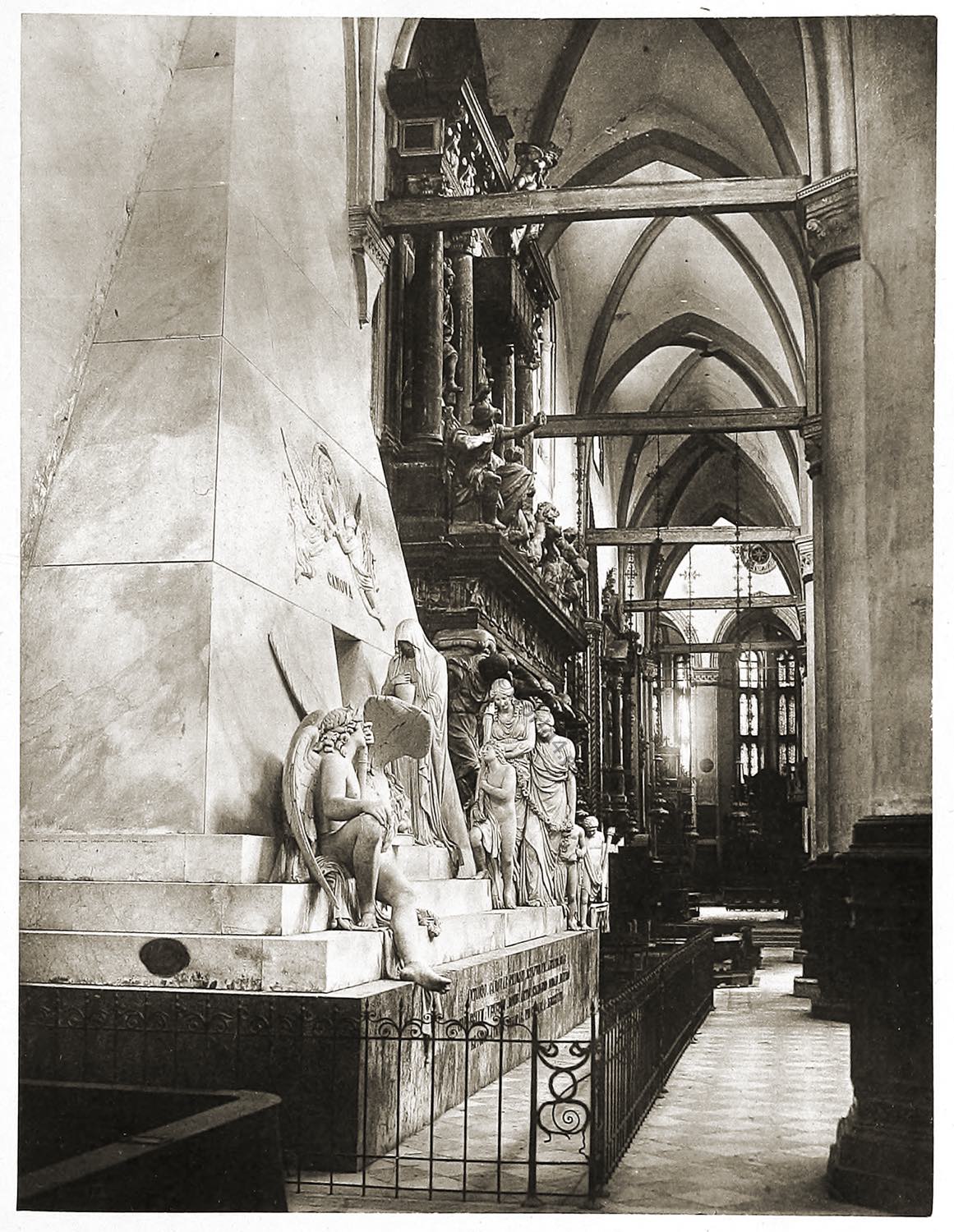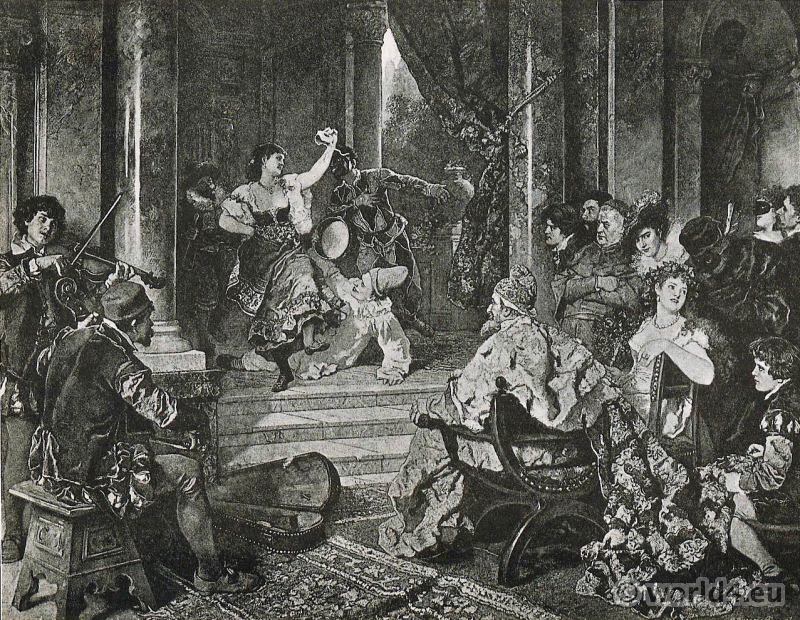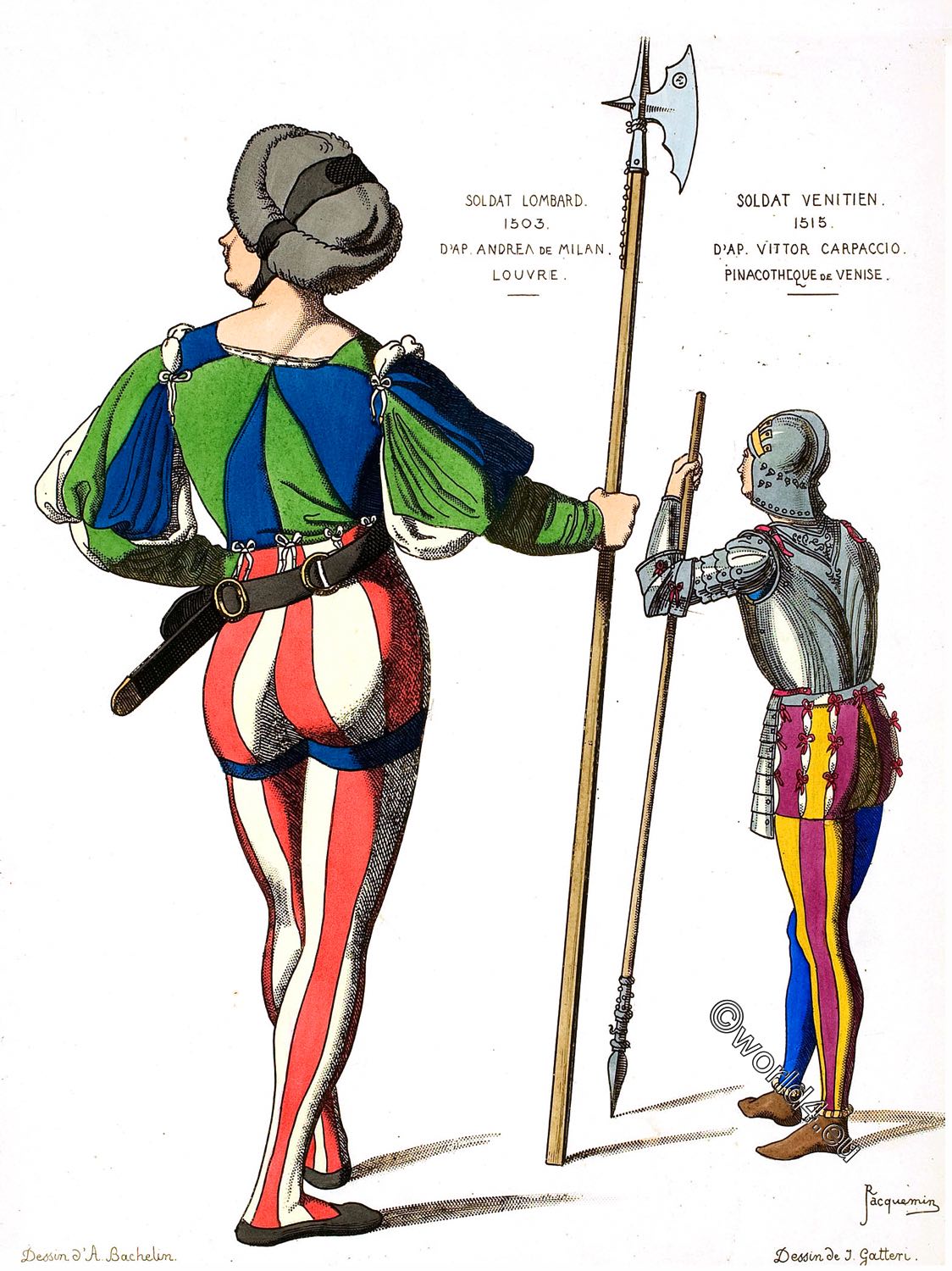
Construction 1600-1603 by Antonio Contin.
The Bridge of Sighs is one of the most famous bridges in Venice (Italian: Ponte dei Sospiri). It is an architectural bridge that connects the Doge’s Palace and the Prigioni nuove, the new prison, and crosses the Rio di Palazzo, a canal about eight metres wide. It was only given its name in the age of Romanticism, in the idea that prisoners on their way to prison could take a last look at the freedom of the lagoon from here with a sigh.
The Bridge of Sighs is built of Istrian stone, Baroque style, and was designed at the beginning of the 17th century by the architect Antonio Contin, son of Bernardino Contin and grandson of Antonio Da Ponte: the builder of the Rialto Bridge, by order of Doge Marino Grimani, whose coat of arms is carved on it.
THE BRIDGE OF SIGHS, VENICE.
"I stood in Venice, on the Bridge of Sighs,
A palace and a prison on each hand:
I saw from out the wave her structures rise
As from the stroke of the enchanter's wand:
A thousand years their cloudy wings expand
Around me, and a dying Glory smiles
O'er the far times, when many a subject land
Looked to the wingéd Lion's marble piles,
Where Venice sate in state, throned on her hundred isles!"
Childe Harold’s Pilgrimage. George Gordon Byron – 1788-1824.
NO prisoner whose name is worth remembering, or whose sorrow deserved sympathy, ever crossed that ‘Bridge of Sighs,’ which is the centre of the Byronic idea of Venice,” writes Mr. Ruskin, thus demolishing at a blow all the romantic halo that is attached to this celebrated arch. We are reluctantly compelled to admit the justice of the great art-critic’s dictum. A brief examination will at once suggest a close resemblance to Temple Bar, which belongs to that late Renaissance style of architecture unworthy of imitation.
But the entourage of the Bridge of Sighs belongs to the architectural wonders of the world. The Doge’s Palace, the Cathedral of St. Mark, and the Library of St. Mark form one of the three incomparable groups which hold the highest place in our memory; the others being that open space at Pisa upon which stands the Duomo, the Baptistery, the Leaning Tower, and the Cloisters of the Campo Santo; and the Acropolis of Athens with its ruined temples “drowned in the shadow of the Parthenon.”
No other city is so fascinating to the imagination, so rich in associations, or so picturesque, as Venice. A protracted residence there served only to open out each day new and unexpected sources of interest and admiration. No other city will awaken such remembrances, or so help one to realize the life of the middle ages. Its desolate palaces, its grass grown courts, its silent highways, its fallen greatness, are subjects which stir the heart, while there is still enough of beauty and grandeur to charm the eye.

Pleasant is it to glide about in the Venetian gondola without noise, or dust,’ or hurry. But in time one takes pleasure in threading the intricate calles (by which after crossing innumerable bridges it is possible to reach any part of Venice), and the longing comes at length for a “constitutional” across an open country. The gondola will then be reserved for such excursions as to Murano and Torcello, and the islands scattered over the Lagoon, or the Lido, that bank of land upon which the Adriatic breaks, and which Shelley loved so much, and of which he wrote:
"I love all waste
And solitary places, where we taste
The pleasure of believing what we see
Is boundless, as we wish our souls to be:
And such was this wild ocean, and this shore
More barren than its billows."
Julian and Maddalo: A Conversation. Percy Bysshe Shelley 1792-1822.
Descriptive Article by Stephen Thompson. Photographed by Thompson.
Source:
- Treasure spots of the world: a selection of the chief beauties and wonders of nature and art by Walter Bentley Woodbury (1834-1885); Francis Clement Naish. London: Ward, Lock, and Tyler, Paternoster Row, 1875.
- The ‘old’ Water-colour society by Charles Holme (1848-1923). London; New York: Offices of ‘The Studio’. Royal Society of Painters in Water-Colours, 1905.
Related
Discover more from World4 Costume Culture History
Subscribe to get the latest posts sent to your email.






